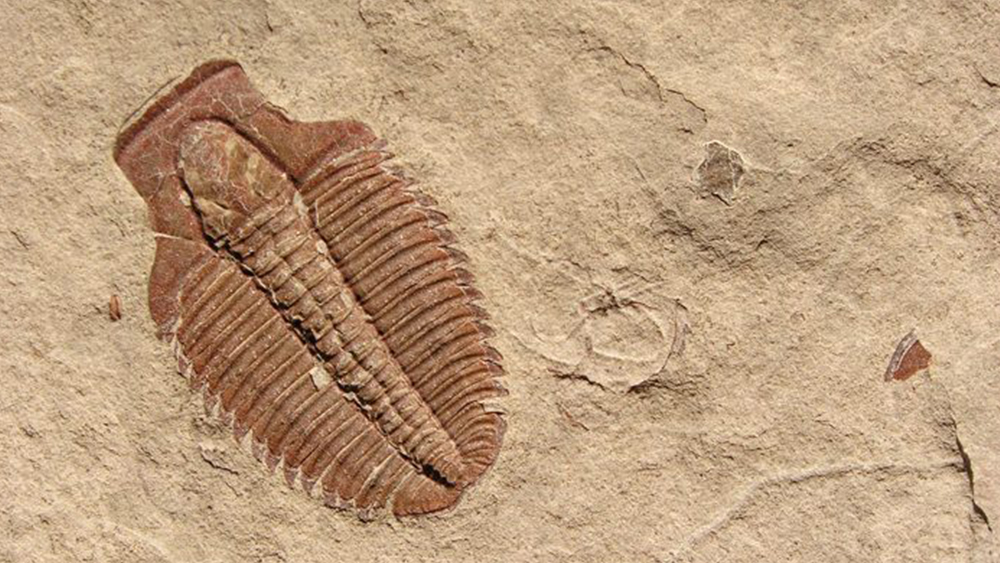Jacob Beasecker and his colleagues from Michigan State University attempt to justify their perceived lack of an “explosion” of life by noting that there have been many fossils found in rocks below the Cambrian.1 And they argue that Cambrian fossils appear over many millions of years—“hardly ‘explosive’ in the widely understood use of the word.”1 Additionally, Beasecker and his colleagues go on to claim:
But perhaps the most compelling reason to reassess the use of the word “explosion” to describe biodiversification during the Cambrian, separate from linguistic lineage and disciplinary developments, is its appropriation by followers of non-scientific explanations for life’s origin.1
In other words, creationists. Sadly, Beasecker and co. are trapped by a uniformitarian worldview. They cannot accept the historical truth of a global Flood and continue holding fast—with an almost religious fervor—to evolution as their sole “scientific” explanation for all creatures. Furthermore, they claim that these “non-scientific” followers are merely using the Cambrian Explosion to falsify evolutionary theory and befuddle evolutionists.1
However, in their article, Beasecker and co. never offer any specific scientific evidence to justify their claims. They list no ancestors or transitional forms for any of the new types of creatures that suddenly appear fully formed and functional in the Cambrian. Biogeochemical signatures and hypothetical molecular phylogenetics aside, none of these demonstrate the ancestor/descendent relationships necessary to explain the diverse life forms in the Cambrian.1
Beasaker and colleagues try to further explain:
Certainly, biodiversification at the beginning of the Cambrian was unique—all those new body plans—but no evolutionary rules were broken [italics in original], nor is there mystery or discipline-dividing controversy, as is claimed by anti-science concerns who seize on the term “explosion.”1
The authors of the editorial dismiss the evidence in the rocks showing the sudden appearances of so many fully formed and functional types of creatures in the Cambrian. And they claim all alternative explanations are merely unscientific and should not be considered. Finally, they conclude by suggesting that scientists change the term Cambrian Explosion to the less catastrophic-sounding Great Cambrian Biodiversification (GCB).1
But is there fossil evidence for a gradual biodiversification in the rock record as they claim, especially in the Cambrian? If so, there should be a plethora of similar types of creatures in the Cambrian and just below the Cambrian, in what is called the Ediacaran System. Evolutionary theory demands ancestors. Without ancestors, they are breaking evolutionary rules. For example, trilobites (marine arthropods), which are so common in Cambrian rocks, should have many closely-related ancestors in the Ediacaran rocks below. But do they?
A study published in 2018 examined in detail these youngest Precambrian rocks, looking for ancestors to the animal types found in the Cambrian rocks above, especially the trilobites.2 They even considered the trace fossil (tracks and burrows) record of the arthropods and biases that may have been caused by various modes of preservation.2
These scientists demonstrated that there were similar opportunities for preservation in both the Cambrian and Precambrian rocks, and yet arthropod (trilobite) fossils and trace fossils are found only in the Cambrian sediments.2 “The lack of euarthropod body fossils in the Ediacaran biota is mirrored in all other preservational regimes in the Precambrian, including BSTs [Burgess Shale Type deposits], phosphatised microfossils, and chert deposits.”2 Furthermore, they found that arthropod trace fossils are “strikingly absent” in the Ediacaran rock layers.2
So, there really are no ancestral forms in Precambrian rocks to explain the sudden appearances of so many diverse types of creatures in the Cambrian. Whether evolutionists want to stretch the sudden appearances like an accordion over many millions of years or not, it does not eliminate the problem. The Cambrian Explosion problem remains.
The sudden appearances of diverse types of fossils in Cambrian strata was a recognized problem by Charles Darwin in the 1800s and persists as an embarrassing enigma today.3 Jeff Tomkins aptly summarized the issue in a 2020 Acts & Facts article:
The Cambrian Explosion is a complete evolutionary enigma for a number of important reasons. First, incredibly complex animal life appeared suddenly and without any sign of preceding evolutionary ancestors. Second, many creatures that appeared in the Cambrian layers have living counterparts today that show no sign of evolution—a paradox evolutionists label living fossils. Third, tube worms (another living fossil) have been found in rocks just below the Cambrian, and their fossils yielded soft, pliable tissue. The fact that their tissue, along with many other examples, is still soft and undecayed indicates they were buried only thousands of years ago in the global Flood described in Genesis.3
The global Flood continues to be the most convincing explanation for the fossil record and the Cambrian Explosion. Creatures of all types suddenly appear as fossils in their order of burial, many beginning in the Cambrian. Evolutionary scientists continue to search for ancestors in the rock record, but they always come up empty-handed. And because so many creatures make their first appearances in Cambrian strata, we are justified using the term “Cambrian Explosion.” Science supports it!
References
1. Beasecker, J. et al. 2020. It’s Time to Defuse the Cambrian “Explosion.” GSA Today. 30(12):26-27.
2. Daley, A. et al. 2018. Early fossil record of Euarthropoda and the Cambrian Explosion. PNAS. 115 (21): 5323-5331.
3. Tomkins, J. 2020. The Fossils Still Say No: The Cambrian Explosion. Acts & Facts 49(12):10-13.
*Dr. Clarey is Research Associate at the Institute for Creation Research and earned his doctorate in geology from Western Michigan University.














